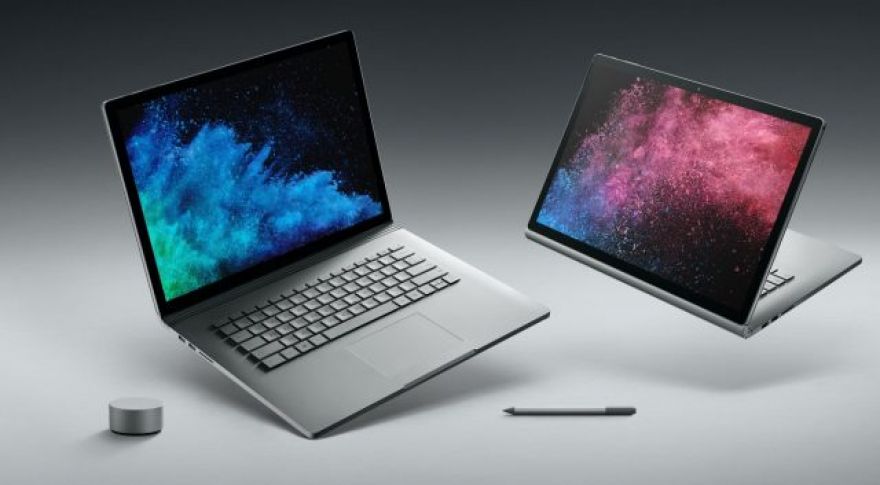
Microsoft Introduces Surface Book 2 With GTX 1050, 1060 Options
Back in 2015, Microsoft launched its first laptop, the Surface Book 2. At the time, the device sported a novel design aesthetic, with a curved hinge that served as a docking port as well as a distinctive visual cue. The Surface Book was also unusual compared with other 2-in-1 designs at the time, which typically packed the entire “computer” into the display and used the bottom keyboard as either a simple port hub or a port hub with a connected battery. The Surface Book broke with this by also integrating a GPU into the base. Now, Microsoft has updated the design with a new chassis and hardware.
This is a more significant update than what we saw earlier this year, when the Surface Book was refreshed with a new Performance Base. And we’re back to using numbers in the name, despite abandoning them with the Surface Pro micro-refresh that launched earlier this year. The Surface Book 2 now includes 13-inch and 15-inch options, with significantly more powerful GPUs. Previously, the Surface Book shipped with an Nvidia GTX 965M. That’s now with GTX 1050 and GTX 1060 GPUs.
There are, however, some points to be aware of. Nvidia decided to launch its desktop GTX 1050 and GTX 1060 as mobile GPUs rather than spinning separate mobile SKUs with lower core counts, and this has an impact on how loud laptops outfitted with these GPUs actually are. Even a 15-inch laptop with a GTX 1050 Ti can get loud, and the 1060 is considerably more powerful. Microsoft only offers a GTX 1060 in a 15-inch form factor, but this should be treated with caution until reviews demonstrate Microsoft can keep a 1060 cool without boring holes in your eardrums in the process. I’m not saying it’s impossible, but it’s going to take some serious design work.
The other thing to be aware of is the way the cost structure on these machines works. Two-in-one devices don’t offer much in the way of good deals, and this machine is no exception. You’ll pay $500 extra for a GTX 1050 and an unknown Core i7 CPU in the 13.5-inch lineup, then another $500 for 8GB of additional RAM and 256GB of additional storage. Need a 1TB device? That’s another $500. The 15-inch family is even worse. With a base price of $2,500, you’re starting in the stratosphere and then climbing even higher.
This is my central problem with the Surface Book and products like it. I understand the ultra-light, ultra-thin market has its own conveniences. But I’m sick of seeing companies lavish these systems with price tags out of all proportion to their likely manufacturing cost.
For decades, the central premise of advancing computer technology was that these capabilities would (and did) trickle down into cheaper markets. From active-matrix LCDs to features like SpeedStep and general performance increases, laptops got better. Today, you can buy a cheap laptop with low performance in a thin and light form factor or a chunkier laptop with high performance and a 4 to 6.5-pound weight–but you can’t buy a thin-and-light laptop with reasonable performance, memory, and storage for less than $1,500.
It’s a great situation for the OEMs, and a lousy situation for anyone who remembers when laptops regularly got thinner, lighter, and more powerful at every price point and performance level. Hopefully the Surface Book than its predecessor, which suffered high initial return rates (often related to hinge problems).